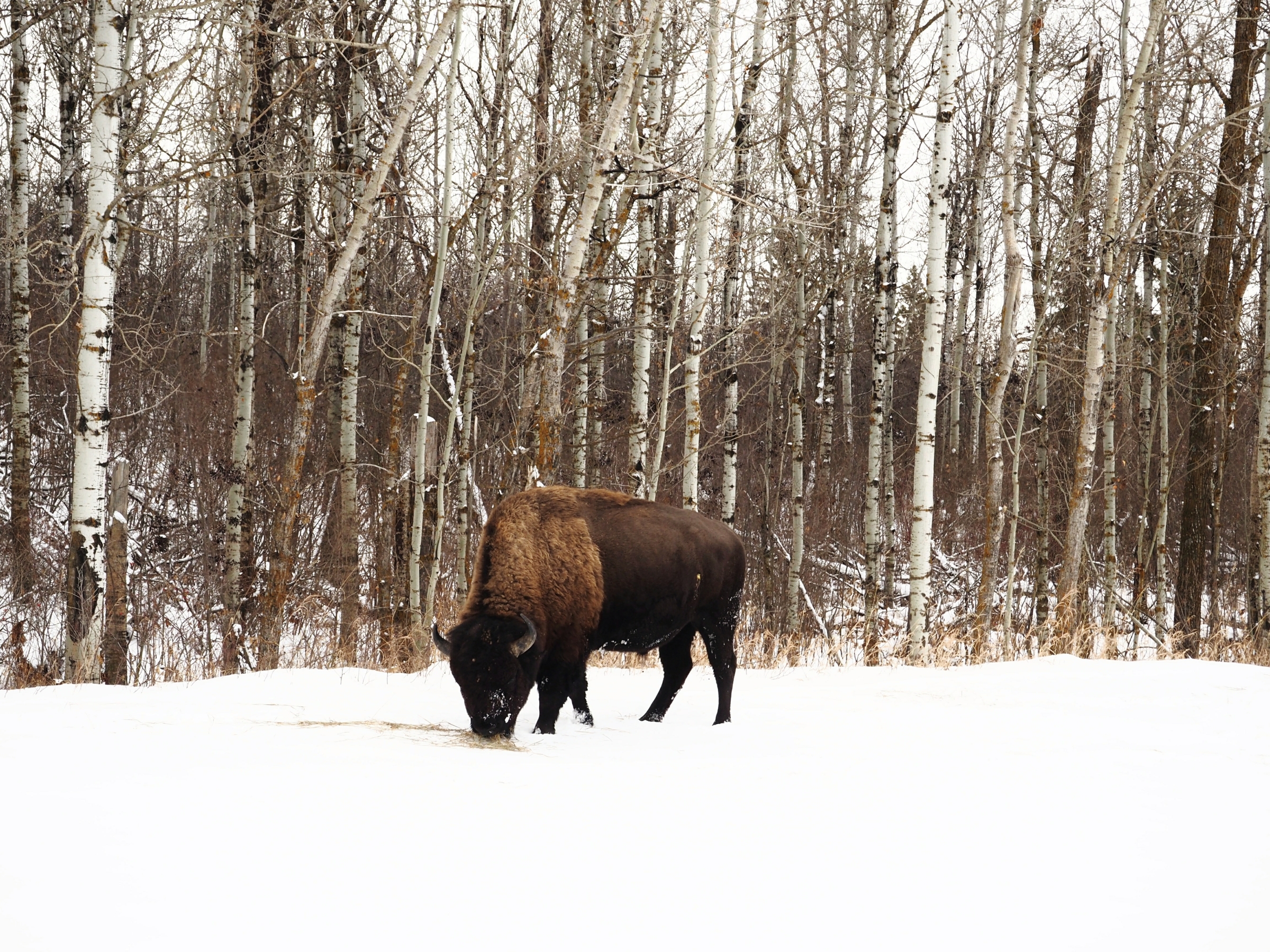Just a short 35-minute drive outside Edmonton you will find Elk Island Provincial Park, which was established in 1906. This fully enclosed park has the right environment to provide year-round protection for many animals including elk and bison. Which means it is perfect for wildlife watching and photography. The park also has many hiking trails, picnic areas, and is home to the Beaver Hills Dark-Sky Preserve, making it excellent for stargazing.
The article was originally written for & featured on NorthAmericanTraveller.com continue reading the full article below.
Exploring the Snow Blanketed Landscape
Pull-on warm winter boots, strap into snowshoes, slip into cross-country skis, or lace up a pair of skates, and get ready for a winter adventure. With 11 different hiking trails to discover, you can easily spend a day winding around lakes and through the woods. Snowshoes are available for rent at the visitor centre. On Saturdays throughout the snowy season, the park offers snowshoeing and stargazing tours, space is limited so book early!
Watch the Stars Sparkle Across the Sky
As part of the Beaver Hills Dark-Sky Preserve, Elk Island is the best location to stargaze on cloud-free nights. The Aurora Borealis visits the sky during the winter months because the park is located so far north. If you are worried about missing the moment when they light up, you can sign up for the local AuroraWatch and have alerts sent to your inbox. Astotin Lake offers easy parking and a surround theatre view of the night sky.
Roasting Marshmallows Over an Open Fire for a Winter Picnic
Throughout the park and especially near Astotin Lake there are many picnic shelters. The park provides firewood; you just have to bring a small hatchet and paper for starting the fire. Astotin Lake is the oldest picnic shelter complete with a chimney from the 1930s. This is the warmest one in the park and its picnic tables are ready for your savoury and sweet treats.
Watch Wildlife leap across the snow
Animals of all walks of life call this park home. They leave footprints in the snow as they wander around the many lakes into the thick forests. Commonly elk, deer, bison, wolves, coyotes, beavers, and black bears can be spotted. Sometimes packs of coyotes can be heard howling in the distance. Be sure to pack your binoculars for the trip as there are over 250 different species of birds as well. With any outdoor adventure, remember to always respect wildlife a give them a good amount of space.
Capture Bison Roaming Freely Throughout the Park
It is easy to find bison at dawn or dusk when they are most actively wandering around the park. Two different breeds live here North of Highway 16 you will see only Plains Bison and South of the Highway has North America’s largest mammal, the Wood Bison. On the Northside of the park, Bison Loop Road offers a wide long view of the landscape and the herd is often found here. If you are having trouble spotting them, just wait they might find you on the road or hiking on the trails.
Elk Island is a wildlife haven during any season. During the winter months, it becomes quieter as fewer tourists visit the park. This means in those early morning hours or late evening when the animals are most active it can feel like you are the only person there. The park’s proximity to Edmonton makes it perfect for day trip adventures or catching the northern lights during night escapades.
See my other articles featured on North American Traveller here
Don’t forget to Subscribe & get articles delivered straight to your inbox, Give a like on Facebook, or Follow on Instagram!


